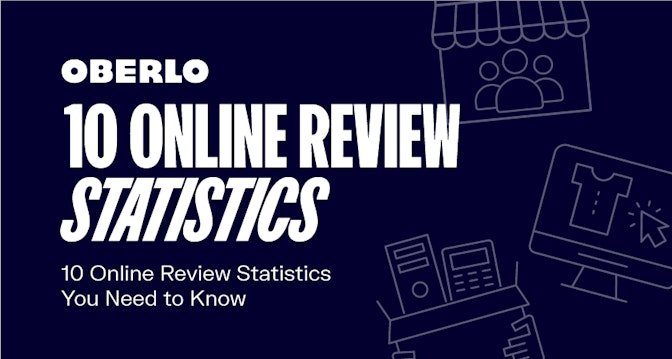Do you remember learning about the stages of a butterfly when you were in grade school? Or perhaps you watched The Lion King and realized what “the circle of life” is? Or how about the saying that everyone knows: What goes up must come down?
If you understand any of these references, then you already possess the basic knowledge of the product life cycle.
According to the Oxford Dictionary, a life cycle is “the series of changes in the life of an organism.” While this is the biological definition, it can be extrapolated to any life cycle. Whether it’s a butterfly or a fidget spinner, there are distinct phases that can be isolated, classified, and described.
While there is plenty of information available about the product life cycle, there is surprisingly little out there about how to optimize for it. Finding or developing the ideal product and listing that product at the right time in your store is important to the success of any e-commerce business, including dropshipping businesses.
In the following sections, we will explain the four phases of the product life cycle, as well as provide you with the knowledge on how to optimize for each phase.

Don’t wait for someone else to do it. Hire yourself and start calling the shots.
Get Started FreeThe Four Phases
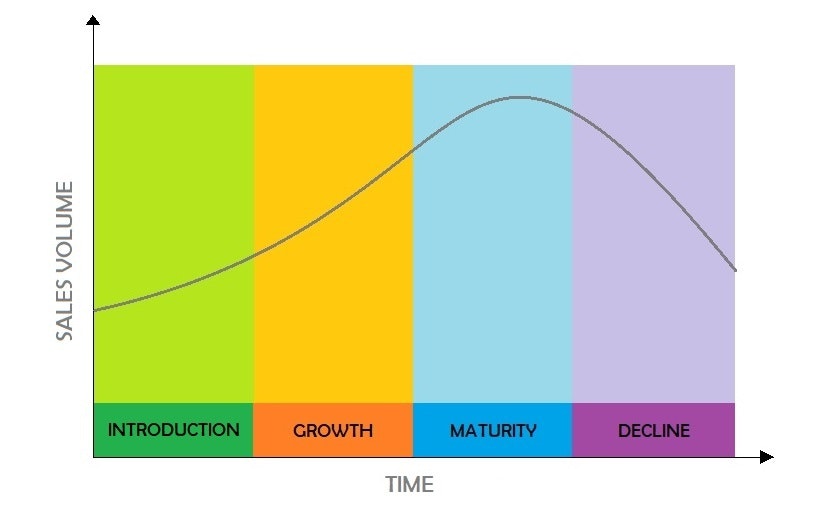
Part of owning a business is paying attention to trends and marketing your products or services accordingly. The trends involve the four stages and have to do with the product’s popularity over time.
The four phases are Introduction, Growth, Maturation, and Decline. Read on to learn about these four stages and how to utilize them to aid in sales.
1.Introduction
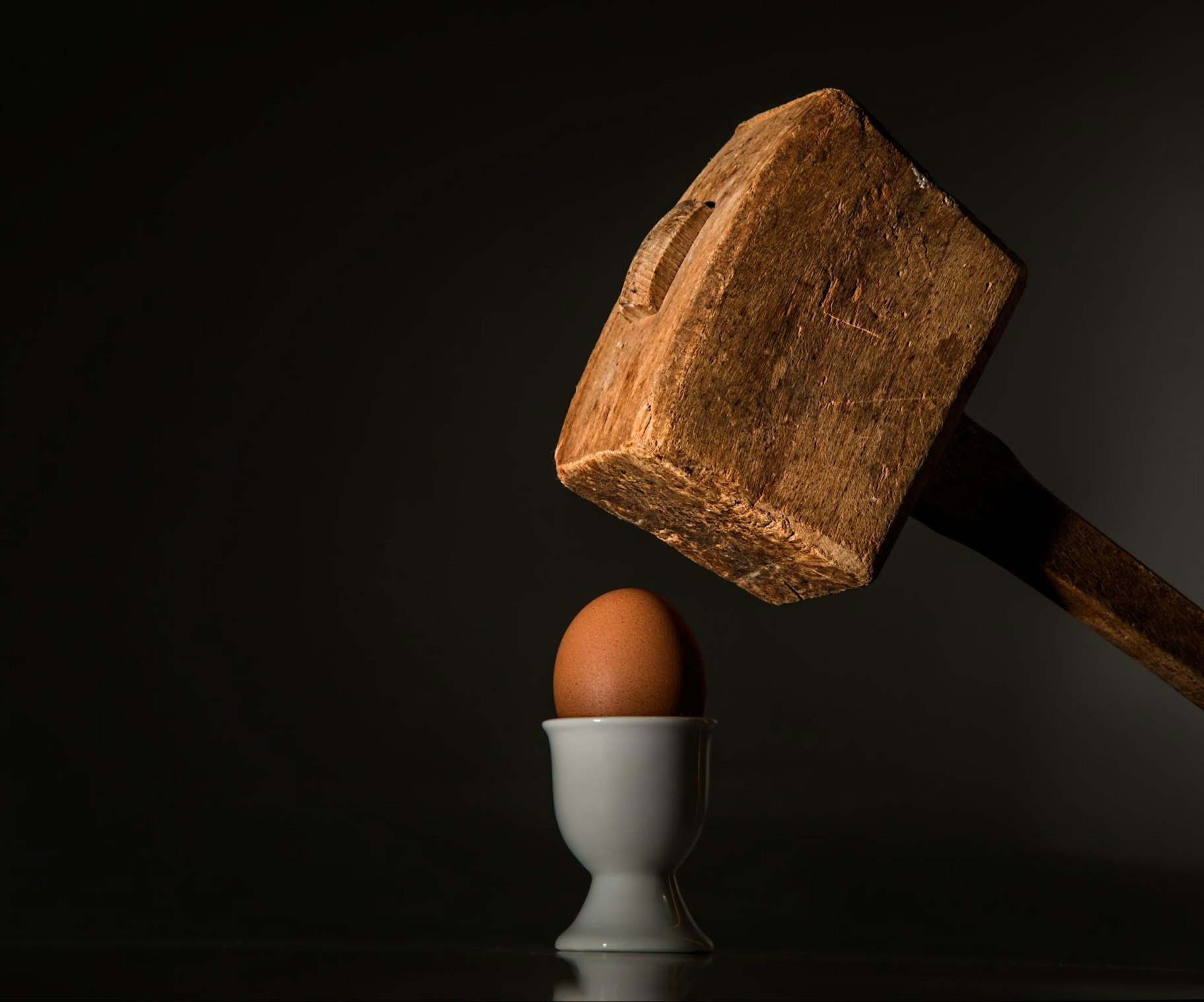
Think of this stage as a freshly laid egg. It’s a product that has just been launched. It hasn’t hatched into a popular or in-demand item yet. This is the phase in which a new product could fail before hitting the mainstream or becoming popular.
Since the new product hasn’t made it into the mainstream yet, the market at this stage is small and sales are always low, although the hope and plan is for that to change. Competition at this stage is also low.
Undoubtedly, there is a lot of time and money spent on marketing and promoting the product to establish the brand and demonstrate quality to the consumers.
At this phase of the product life cycle, a seller may decide to sell the item at a higher price point in order to make a profit and cover research and development costs, or they may decide to sell it at a lower price point in order to increase sales.
Either way, since it has not become mainstream yet and has not had a chance to prove it’s quality or usefulness, it must be marketed to the desired consumers. At this early stage, the product is generally marketed towards innovators and early adopters.
2.Growth
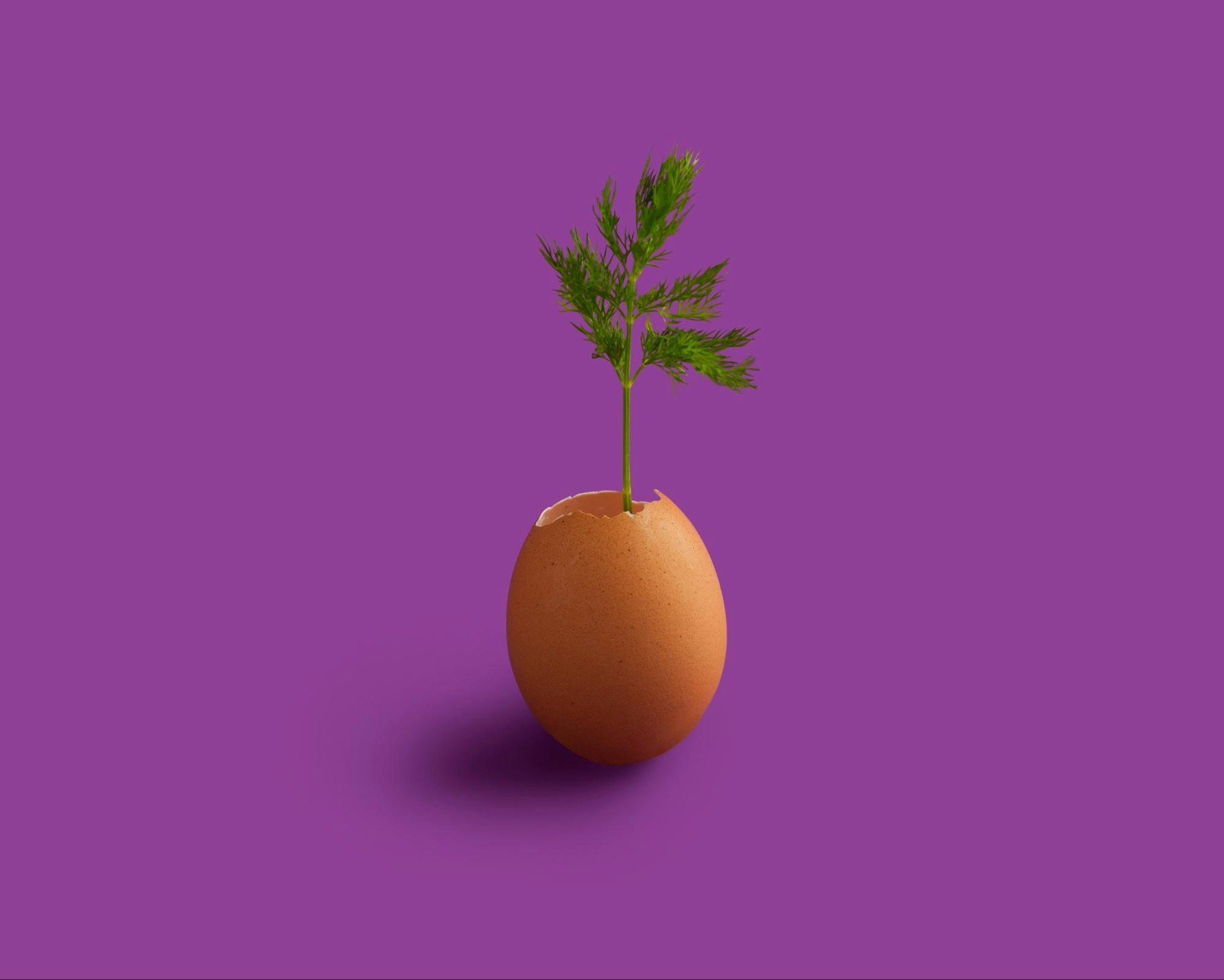
Your egg has hatched and the new life starts to grow and gain traction. Growth occurs when the product starts to take hold and begins to infiltrate the mainstream market. Sales become more consistent and start to surge. You add pressure to increase distribution as the demand increases.
During the growth stage of the product life cycle, there is not as much pressure to promote the product as there was during the introductory phase, and the product may experience rapid growth. This does not mean you should stop promotion or your marketing strategies, but rather switch gears to a different tactic.
In general, there is still little competition at this time, so as sales pick up speed it is a good idea to continue marketing towards your target audiences. Doing so may result in your becoming the leader in the industry, which is exactly where you want to be in any e-commerce or dropshipping business.
It is also at this phase of the product life cycle that improvements are made to the product and the cost of production is reduced. New features are added and new versions are developed.
Keep in mind though that as the product gains traction, the number of competitors you have will begin increasing. As the cost of production decreases, competitors may price their products lower than yours.
Promotion is aimed at a broader audience of early adopters and the early majority (we discuss the types of adopters later in this article).
3.Maturity

As with any life cycle — be it biological or not — at some point, the rapid growth diminishes and maximum growth is attained. Think of this stage as if it is a plant that is producing as much fruit as possible. It can’t possibly produce more because the growth is maxed out.
This is the maturity phase and happens when the growth in sales reaches its peak and sales begin to level off because the market is saturated.
The competition will also reach its maximum during this phase of the product life cycle. Your competitors will likely make changes and enhancements to their versions of the product, and perhaps offer it at a lower cost.
Since there is more competition during this stage than any other stage, special attention must be paid to competitive pricing. This is where you must adjust your marketing, pricing, and promotions appropriately.
Pricing may be lowered to remain competitive and to maintain market share. Promotions and marketing should be focused on proving how your product is superior to the others. Make sure that you do not dip below your break-even point with your pricing and promotions. You want to maximize profit without losing money.
Focus your promotions on the early majority and late majority crowds.
4.Decline

You have gathered all the fruit that you possibly could and your harvest begins to taper off. Just as the leaves start to wither and fall, so do the number of sales.
The final stage of the product life cycle is the decline. The market is saturated and your sales begin to decrease in number as demand decreases. This is not necessarily a bad thing, as it happens to all products at some point. In fact, recognizing that a product is in this stage can save you precious resources.
Keep in mind that just because the product is in the decline phase doesn’t necessarily mean that you should pull it from the shelves immediately. Some products stay in this phase for a long period of time and remain profitable items, while other products lose favor quickly. But all is not lost, you can still make money at this stage.
At this time, you have several options. You can try to rejuvenate the product by adding additional features; you can continue offering the product to a loyal niche, perhaps at reduced costs; or you can discontinue the item and liquidate your inventory. During liquidation, some companies will bundle the declining product with other items to help move it out of inventory.
Marketing for the decline phase is generally aimed at the late majority and laggard crowds.
Marketing At Different Stages
Now that we know and understand the four different stages of the product life cycle, let’s discuss optimizing for each stage, as well as the cycle of adopters for each stage.
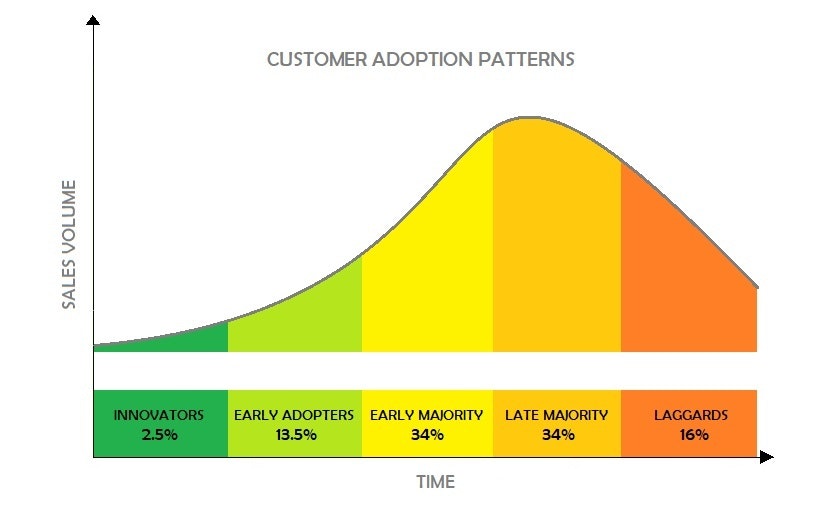
There is a distinct customer adoption pattern for products. This pattern involves five different categories of adopters. You may find it easier to market towards the correct groups in the different phases of the product life cycle by understanding this pattern.
Initially described by Everett M. Rogers in his book Diffusion of Innovations in 1962, the five different adopters are as follows:
- Innovators
- Early adopters
- Early majority
- Late majority
- Laggards
Innovators are the first group of people to try a new product. They are risk-takers and are eager to get their hands on the newest and the best. The novelty of acquiring an item that no one else has yet is appealing to them. This is the group that must be targeted when marketing a newly introduced product. This group makes up 2.5 percent of your customers.
Early adopters are the second phase of customers and account for 13.5 percent of your customer base. This group is, essentially, your influencers. This is the group that will most often create reviews of the product and, like innovators, have some degree of the risk-taker attitude and tend to have access to more disposable income than the adopters that follow. However, unlike innovators, they put more thought and research into the product before purchasing.
The early majority is the group of consumers that follow the early adopters. This group makes up 35 percent of your customer base. Unlike the previous two adopters, the early majority are averse to risk and tend to be more cautious when making purchases. They may not have as much access to disposable income, or they may just be more cautious in general.
Following the early majority comes the late majority. Much more skeptical than the previous groups, this phase of adopters has less money and social status. They also rely heavily on the product being tried-and-true, and won’t often take risks with purchases. The late majority represents another 34 percent of your adopters.
The final 16 percent and last phase of adopters are the laggards. This group values traditional ways of doing things and is unlikely to take any kind of risk. Frequently, this group represents the older population that is not as willing to adopt new forms of technology or has difficulty with it.
Google Trends
Checking Google Trends for a specific search term can help you determine at what stage a product may be in. Google Trends works by quantifying the number of times a term is searched for.
Let’s take a look at the search term “fidget spinner.” We all know what those are and we also know that the popularity waxed and waned rather quickly. The resulting graph shows us a very clear-cut example of the rise and fall of popularity of this item.
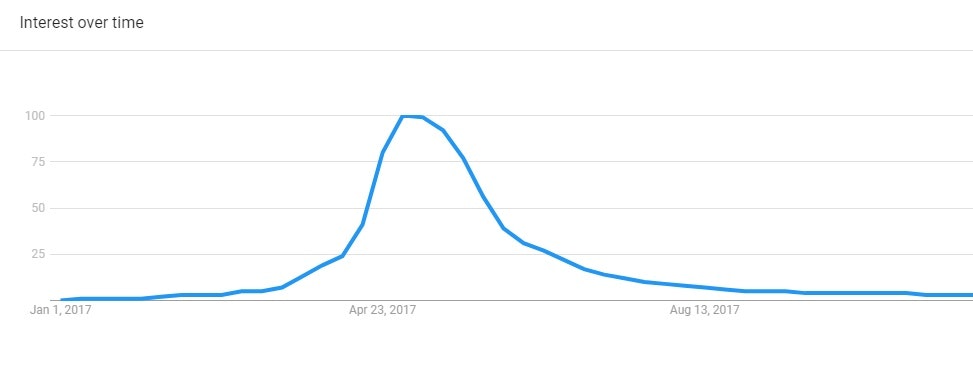
The above graph shows the popularity of the fidget spinner over a period of only five to six months. Notice how it matches the general bell-curve shape of the four phases of the product life cycle.
Now, let’s take a quick look at another graph:

This graph shows the data for the search term “Instagram.” Notice the general trend upwards over the last eight years. This gives us a pretty good idea that, since the number of people performing a Google search for “Instagram” continues to rise, it will likely continue to do so. We have not yet seen the app begin the “decline” phase.
Finally, Google Trends can show us how a product life cycle ebbs and flows throughout the seasons, as shown by trends for the search term “dog costume” below:

Clearly, the Google search for “dog costumes” increases dramatically in the months leading up to October, then drops off suddenly in November.
Watching trends like this in Google Trends can give you a decent idea about the seasonality of certain products and when to successfully list them in your store.
Applying The Data
By understanding the product life cycle and the pattern in which consumers buy into said product, you will be able to maximize returns and streamline your marketing strategies. You will better understand how to handle competition, marketing, and pricing strategies.
There is no way to tell how or when a product will become popular, or for how long, but staying aware of the trends and the cycles will help you determine if it’s worth investing in the product for your store.




